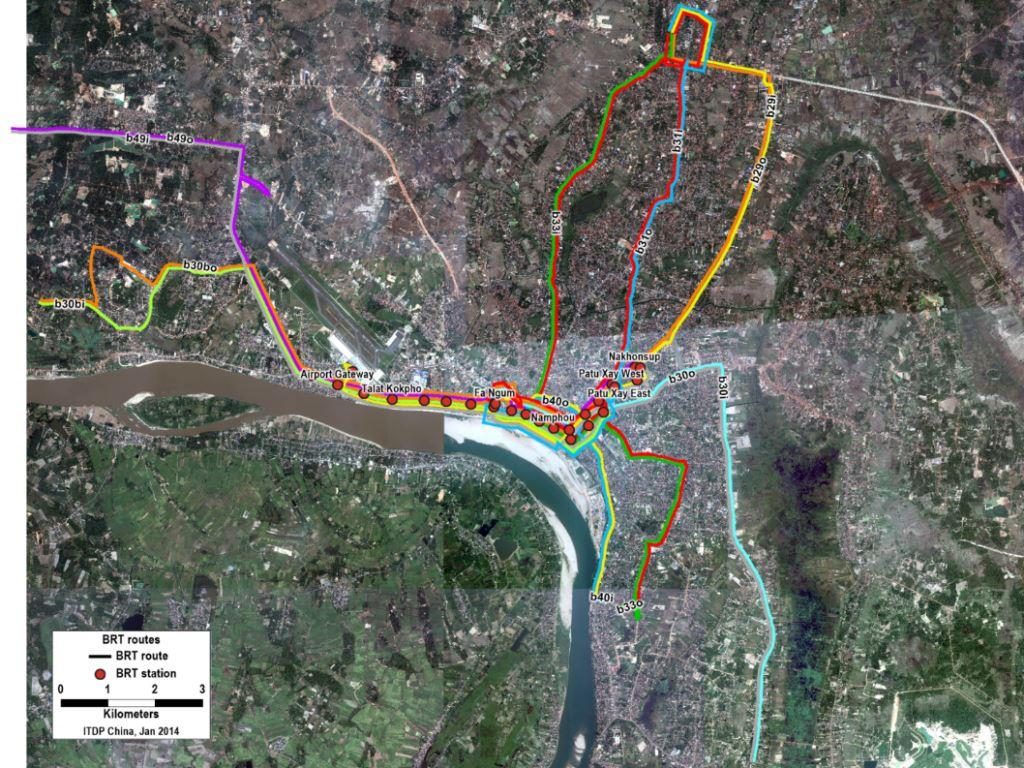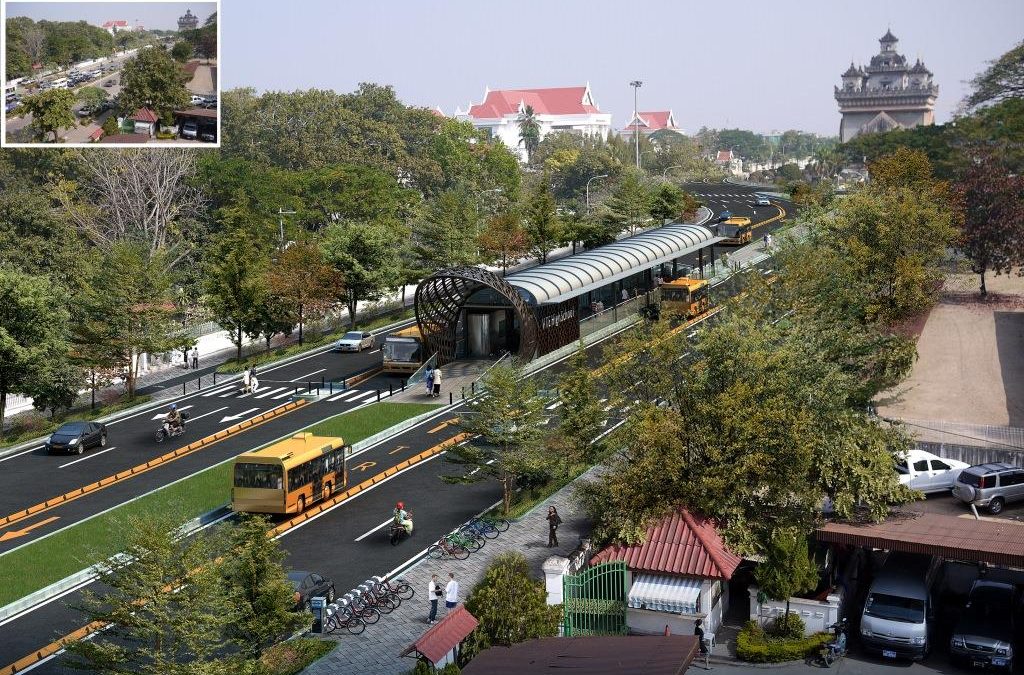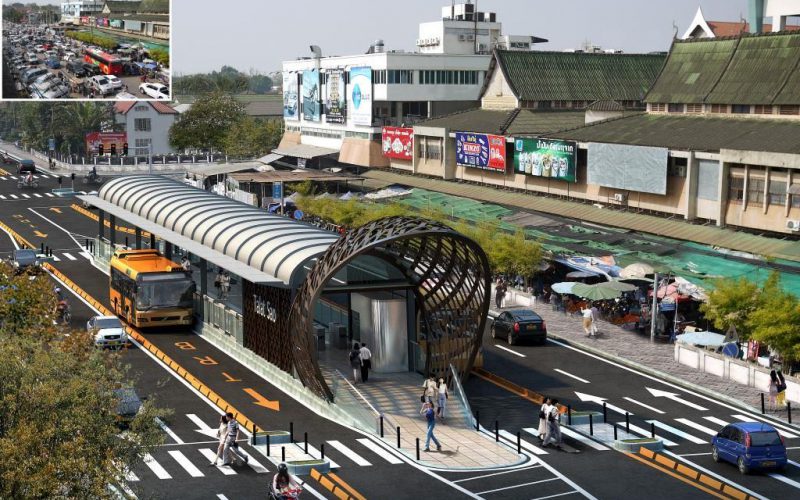
Vientiane is the capital and largest city of Laos, with the famous Mekong River meandering near the border with Thailand. With an estimated population of 750,000 people, Vientiane is experiencing 11% of average annual increase in the number of registered private vehicles over the last decade, and the total number of vehicles registered in Vientiane has doubled over the last five years.
The surge in private motorized transport resulted in worsening local air quality, increasing travel times, accidents, and deteriorating urban environment, placing Vientiane on an unsustainable mobility development path.

The current public transport within the core area of Vientine is largely provided by privately operated paratransit, particularly the three-wheeled tuk-tuks. While the Vientiane State Bus Company provides service from the core area to other points in the greater Vientiane area on routes originating from the central bus station, there is no bus service linking points within the core area. To fulfill this dire need for sustainable urban mobility, the Vientiane Sustainable Urban Transport Project (VSUTP) is a large-scale project piloting a sustainable urban transport system in the core area of the capital, with the hope of mainstreaming it to other Laotian urban areas.
The Vientiane Sustainable Urban Transport Project (VSUTP) seeks to deliver a tangible package of mobility components that will help transform Vientiane towards first being a city for people and not vehicles. The project will deliver the following five outputs:
A high-quality public transport system
An effective parking management and enforcement system
A comprehensive traffic management system with efficient intersection signaling
Quality-of-life enhancements to public space and non-motorized transport facilities
An institutional capacity to manage the sustainable urban transport system.
The new public transport system along with the related traffic management upgrades will serve a comprehensive route network of 84 kilometers bringing benefits to virtually all residents of the city.
The new public transport system will be based upon the model of Bus Rapid Transit (BRT). BRT has provided quality public transport services to over 150 cities world-wide, many with nearly identical social, economic, and size conditions as Vientiane. BRT consists of dedicated priority infrastructure on key trunk roadways, frequent and flexible operations, safe and weather-protected stations, automatic fare collection systems, and integrated planning.
The emphasis of the parking and non-motorized transport components will be upon the city’s historical central core, which today is the area facing the most severe congestion levels. Using modern information and enforcement technologies, the on-street parking system will provide efficient parking options and generate sustainable system revenues. Related upgrades to the urban walking environment and public space will provide the final connectivity to destinations as well as enhance the historical core as a focus for tourism development.
© Times of U

